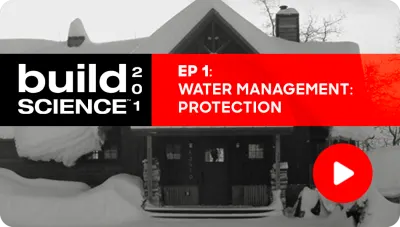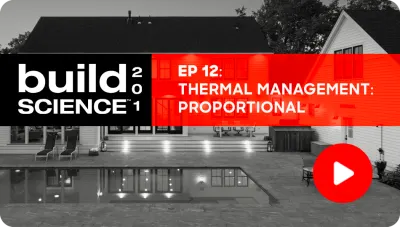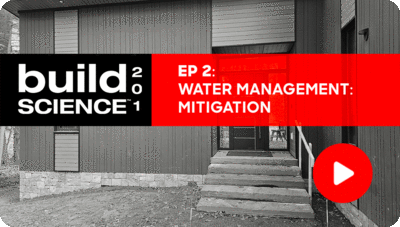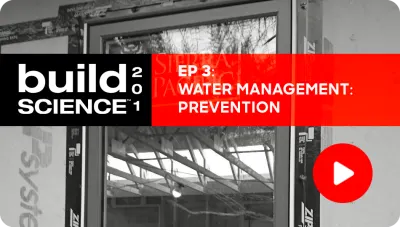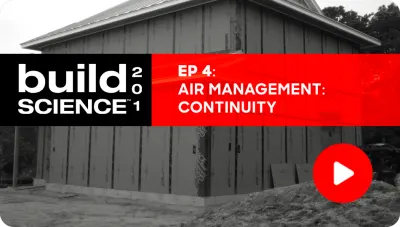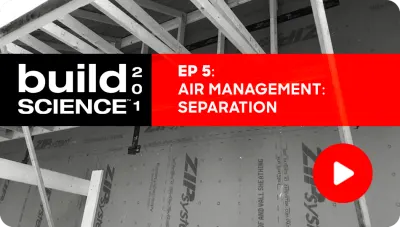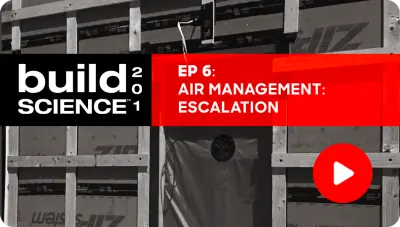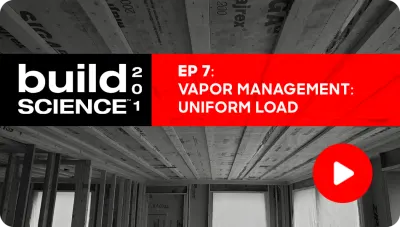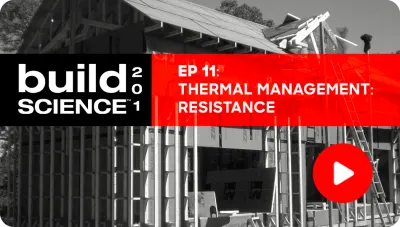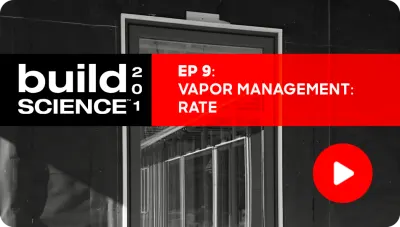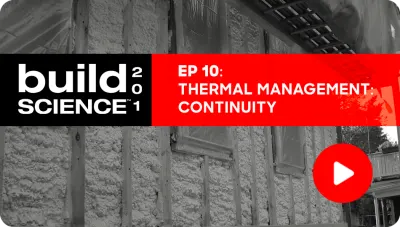Build Science™ 201
Ep. 8 - Vapor Management: Perspective
The crucial conversation around vapor management continues. Steve presents vapor as an asset rather than a liability, emphasizing the necessity of strategic moisture management to prevent issues like mold and structural damage. Both Matt and Steve showcase practical applications of vapor management, including the "perfect wall" (not the first or last time you’ll hear about the “perfect wall” when discussing Build Science™) concept and innovative insulation strategies that facilitate moisture management and drying.
The discussion shifts to advanced roofing techniques, stressing the importance of ventilated roofs, especially in high-moisture climates. These roofs enhance airflow and drying, significantly reducing the risk of leaks and related damage. Innovative design elements, such as open joint cladding and effective ventilation systems, are discussed for their aesthetic appeal and functionality.
Matt and Steve reiterate the significance of managing both water and air to minimize vapor issues, advocating for the use of permeable materials throughout most parts of a home while ensuring tight air seals where needed. Understanding vapor dynamics is essential for ensuring the durability and comfort of modern buildings, making this discussion invaluable for builders and architects alike.
Continue to the next episode in the Vapor Management section: Rate.
Episodes
Ep. 6 - Air Management: Escalation
Episode 6
Matt and Steve emphasize effective air sealing to prevent moisture issues, highlighting techniques like fluid-applied sealants, meticulous penetrations, and blower door tests. They advocate for continuous improvement and training for airtight, efficient homes.
Ep. 11 - Thermal Management: Resistance
Episode 11
Matt and Steve highlight insulation's role in heat resistance, discussing R-values, U-factors, thermal bridging, and continuous insulation. They also emphasize climate-specific techniques, shading devices, and window specifications for energy efficiency.
Ep. 12 - Thermal Management: Proportional
Episode 12
Build Science™ 201 emphasizes proportional thermal control, highlighting balanced insulation for sub-slabs, walls, and windows. Builders should prioritize water/air control layers, exceed minimum attic insulation, and enhance energy efficiency. Build Science™ 201 emphasizes proportional thermal control, highlighting balanced insulation for sub-slabs, walls, and windows. Builders should prioritize water/air control layers, exceed minimum attic insulation, and enhance energy efficiency.

 Share on facebook
Share on facebook Tweet
Tweet Email
Email Share on Linkedin
Share on Linkedin
